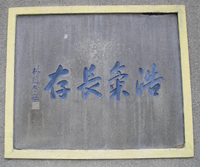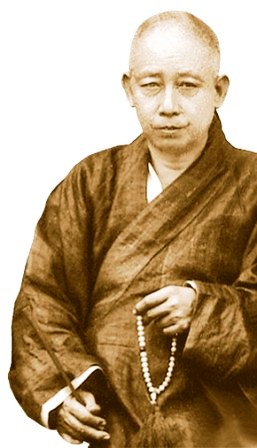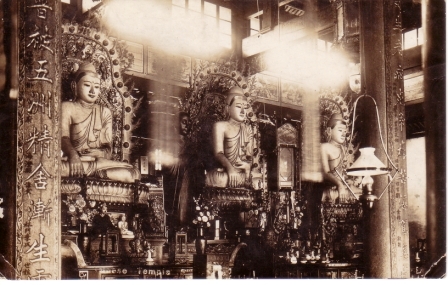
| Home | Chinatowns of the world | Festivals | Culture | Food Culture | History | Countries |
| Chinese Religion | Tours | Sitemap | Documentaries | About | Contact |
Venerable Pu Liang 普亮法师Venerable Pu Liang was the chairperson of the Singapore Chinese Buddhist Association just before the Second World War. He supported China Relief Fund programs and prayed for war victims. During the Japanese Occupation, the Venerable was executed by the Japanese. This article is a tribute to a Venerable who sacrificed for the welfare of society and whose story remains unrecorded in the history books. Venerable Pu Liang (普亮法师) was the chairperson of The Singapore Chinese Buddhist Association, 新加坡中华佛教会 from 1937 to 1942. He held the chairperson position for 4 terms (10th to 14th committee). Venerable Pu Liang entered monkhood in Xichan Si (西禅寺), Fuzhou (福州), China. He came to Singapore in 1912 and lived in the Shuang Lin Monastery 莲山双林寺. In 1917, he became the Abbot of Shuang Lin Monastery. His office term at the Singapore Chinese Buddhist Association coincided with the start of Second Sino Japanese war. Overseas Chinese in South East Asia established the China Relief Fund (马来亚新加坡华侨筹赈祖国伤兵难民大会委员会) in support of China. People from all levels of society including Buddhist organizations supported the China Relief Fund activities. Venerable Pu Liang participated in various fund raising events, organized prayers for war victims and allowed Burma Road volunteers to train in the Shuang Lin Monastery. From 1938 to 1941, Venerable Pu Liang organized a prayer ceremony on the anniversary of July 7 Incident 七七事变,卢沟桥事变, the event that sparked the Sino-Japanese War. In the 1940 memorial session, he also prayed for World Peace. The Venerable was described in the Chinese papers as “very active in social work”. During the Vesak Day of 1939, Venerable Pu Liang organized a major Fund Raising program that received extensive press coverage. The event was known as “Shuang Lin Monastery Vesak Day Vegetarian Meal Fund Raising Event” (双林寺释迦佛祖诞辰斋筵助赈会). During a press conference, Venerable Pu Liang explained that in times of crisis, every citizen, regardless of age, sex or religion, has a duty to serve the country. As a Venerable, he has limited resources but he could serve by holding memorial services for war victims. At the same time, he was willing to contribute Vesak Day vegetarian meal contributions to the China Relief Fund. The event was held on 28 May 1939 in the Monastery and attracted thousands of participants. The event raised about $10 000 (Straits Dollars) for China Relief Fund, a significant sum of money in the 1930s. As a comparison, a mechanic’s salary was about $200. Nanyang Volunteers, 南侨机工In 1939, the Chinese Nationalist government called for volunteer drivers to serve on the Burma Road. China Relief Fund recruited suitable drivers and later decided to train them before they depart for China. Venerable Pu Liang agreed to China Relief Fund’s request to establish a training institution in the Shuang Lin Monastery. The Training Institute was managed by China Relief Fund and independent of the monastery. The last batch of volunteers left the monastery in September 1939. China Relief Fund activities continued till the beginning to Japanese invasion of Singapore. The Japanese began invasion of Singapore on 7 February 1942. Fall of SingaporeBy 15 February 1942, British surrendered and Singapore became Syonan (昭南岛). About a week later, the Japanese launched the “Sook Ching” (肃清, 大检证), Purification by Extermination. It was an exercise to eradicate anti Japanese elements in Singapore. During the Sook Ching, a group of soldiers arrived at the Shuang Lin Monastery to arrest Venerable Pu Liang. The Venerable and two disciples were taken to Jalan Besar Stadium and executed at Changi beach. The Sook Ching operation lasted for two months and claimed lives of many innocent civilians. The Japanese believed 6000 victims died but local Chinese sources estimated between 50 000 to 100 000 victims based on exhumed graves after the war. In 1947, the Singapore Buddhist Association held a memorial service for Venerable Pu Liang. The commemorative banner paid tribute to Venerable Pu Liang’s selfless sacrifice for society; 卫法捐生,是能无畏施 证真断感,不入有余 In 2009, Venerable Pu Liang's history has been documented into a book titled "Light on the Lotus Hill". Related Articles:Singapore Chinese Buddhist Association celebrates 80th anniversaryLight on the Lotus HillBuddhism main page
|
|
| Join us on | Youtube | |||
| Copyright © 2007-24 Chinatownology, All Rights Reserved. | ||||
 Nanyang Volunteer, 南侨机工
Nanyang Volunteer, 南侨机工 


